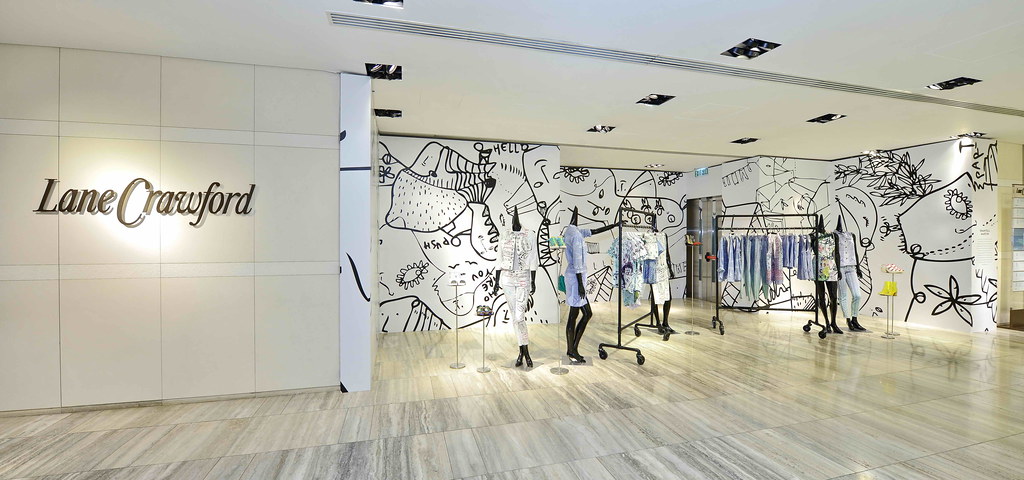Have you ever heard of market segmentation? As the name suggests, segmentation means dividing the customers of a market into different segments. The customers in the same segment share the same or similar characteristics, interests, and product demand. A marketer will provide different segments with different suitable products, to fulfil the needs of different customers.
Market segmentation is useful for a firm to select target markets and define various marketing strategies in the future. Once you have sorted out your target customers, you may spend more resources on them and the most profitable products, so as to reduce production costs, increase the efficiency and competitiveness of your enterprise.

The four most common segmentation methods are:
- Geographic Segmentation: such as country, region, or population density;
- Demographic Segmentation: such as age, gender, income, or education level;
- Psychographic Segmentation: such as personality, lifestyle, or moral value;
- Behavioral Segmentation: such as brand loyalty, purchasing habit, or price sensitivity.
In fact, we have already been divided into different segments by companies when we are consuming every day. For example, the international corporations separated the whole world into Asia market or Western market based on geographic segmentation; A fashion brand will separate their products into adult clothing and kid clothing or male clothing and female clothing. For traditional companies, the most cost-effective segmentation methods are geography and demography. The firms only need to gather the basic background information of the local market and customers to do the segmentation. Hence, demographic and geographic segmentation is the most commonly used segmentation method.
New Trend: Psychographic and Behavioural Segmentation
Covid-19 pandemic illustrated the significance of the advance in digitalization. With the rise of e-commerce, a firm’s marketing strategies need to keep up with the pace too. Compared with the traditional segmentation method, more and more enterprises are starting to divide their market based on psychographics and behavioral segmentation, to clarify the characteristics of their customers in detail. By knowing it, personalization can be done better. Here are some of the examples:
Financial Service Industry:
Personal Digital Banking Service Based on Personality Segmentation
Simple is a virtual bank established in the US in 2009. Its philosophy is to provide simple, agile, and convenient banking services to the public. The gimmick of simple is the extremely personalized and user-friendly banking service. Apart from providing daily transaction services, Simple includes the functions of personal financial charts, smart financial management, and saving service to the users. Unlike the other traditional banks or even other virtual banks, Simple does not divide their users by income or asset amounts. Instead, they segment their market with the personalities and thoughts of the users. When opening an account, Simple will ask the users for their thoughts and banking habits to decide what type of service to provide to them, such as whether they would like to be approached regularly or only when they are in need.
The reason why Simple is able to gain a huge amount of users is that it is “simple”, the gimmick is attractive enough for those who are afraid of complicated procedures or communication. Simple Bank is literally a tailor-made banking platform designed for them.

Retail Industry:
Who are the Target Customers of Pet Supplies?
You might be confused after reading the subheading: Aren’t those cute little ones the target customers of pet supplies? Sure, pet products are designed for pets, a lot of retailers categorize their products according to the pet species, pet size, or even pet ages. For example, there are foods designed only for cats, small dogs, old dogs, and so on.
In fact, there is one more rare segmentation method – dividing the market according to the purchasing purpose of the pet owners. If the owners treat their pets as family or children, they would seek the best for their pets, and buy them the most expensive and high-quality food; If the pet owners care about the health of their pets the most, they might buy them natural, healthy and organic food for them; And if the pet owners see their pets as guardians, they might not be willing to spend too much money on their pet and buy them the cheapest food instead. We can come up with different market divisions when we think about the same kind of product from different angles.

Luxury Goods Industry:
Fashion Followers VS Gift Sender
Loyal customers are the main customers of luxury brands, their loyalty toward the brands should be higher than usual, shopaholics or fans would even hand in their money for the latest products. This is not exaggerating, sometimes 80% of the income might come from 20 % of the customers. Of course, luxury brand shoppers are more than that, take Lane Crowford as an example, except for loyal customers, their target customers include the gift buyers on holiday or other special occasions.
Fashion followers and gift senders are the two groups of target customers that Lane Crowford should take care of. Lane Crowford needs to come up with different strategies to attract these two groups of customers, such as promoting their latest fashion to their loyal customers and shopaholics during the fashion seasons. They will be more likely to keep up with Lane Crowford’s latest products and spend money on them. For those gift senders, luxury goods might be too expensive for ordinary shoppers, Lane Crowford may promote its products with different holiday discounts, attract regular customers to their shops and provide them with affordable items. Based on different purchasing purposes and demands, Lane Crowford may promote its products in different ways.

After looking at the above three examples, we have learned that market segmentation is crucial for a business. Effective customer analysis and segmentation are beneficial for a business, from resources distribution, product design, to market location, promotion, and retention process, all of these works rely on the information acquired from market research and segmentation. Apart from getting to know about the demands and characteristics of target customers, a lot of neglected information may arise and help the marketing team to brainstorm new ideas. It is important to have a deep understanding of it before stepping into the market. If you want to know more about business and market analysis, feel free to contact us through the top right corner of the website, we are happy to help.
